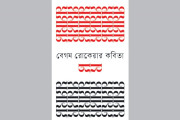Jannatul Islam: The move to facilitate Bangladesh’s trade in Indian Rupees has been hailed by economists as a strategic move to alleviate pressure on the country’s foreign exchange reserve, which is currently dominated by dollars.
This move also mirrors the strengthening economic ties between the neighbouring countries and the innovative introduction of Taka-Rupee in cross-border transactions.
Bangladesh’s foreign reserves, after a $1.9 billion payment to the Asian Clearing Union (ACU), decreased to $30.11 billion last week.
Former Bangladesh Bank Governor Dr Atiur Rahman perceives the use of the Indian rupee in trade as a promising start for utilizing local currency in regional trade, with potential expansion to include the Taka.
Dr Atiur advised against complacency as the US dollar would still hold sway over global trade for years to come. “This should be seen as an experimental move for conducting trade in an alternate currency when there is visible pressure on the foreign exchange reserve in Bangladesh,” he stated.
According to Dr Atiur, bilateral trade in Indian rupee can alleviate part of the ACU settlement obligation in US dollars. “We export about two billion dollars’ worth of goods and services to India, while we import about $14 billion from India,” he added.
Sonali Bank and Eastern Bank have already been granted permission by the Reserve Bank of India (RBI) to open nostro accounts.
Bangladesh Bank Governor Abdur Rouf Talukder is anticipated to inaugurate the rupee-based transaction this week, with RBI governor Shaktikanta Das and SBI officials joining virtually.
This arrangement could lead to new opportunities, especially if Indian banks could be convinced to transition from dollar-based import settlements through letters of credit to sales contracts with deferred payments.
Dr Atiur added, “If there is any dispute, there is a mechanism between the two central banks to undertake redress measures.”
According to Dr Rahman, persuading India to set part of the line of credit as a swap fund in Rupees, which is not being implemented at the right pace, could help banks settle their smaller trade contracts through deferred payments, thus easing the pressure on foreign exchange reserves.
Dr Rahman noted, “We will learn more by doing. This is a good start, but we should not expect the Indian Rupee to become a global reserve currency shortly. It is being used to facilitate trade in local or regional currency to expedite trade transactions.”
Centre for Policy Dialogue (CPD) distinguished fellow Dr Mustafizur Rahman stated that this new arrangement could herald new opportunities for bilateral trade. He suggested discussing the possibility of direct Taka-Rupee exchange in trade, as both rates are currently dollar-centric.
In the long term, Dr Mustafizur recommended exploring new avenues of Taka-Rupee cooperation outside trade activities, such as project financing under the line of credit (LOC).
He also emphasized the need for export portfolio diversification. “Such a new arrangement with Rupee will reduce the pressure on reserves and bring stability in foreign exchange,” he added.
This change comes as trade between India and Bangladesh intensifies.
Bangladesh is currently India’s largest trading partner in South Asia and its fifth largest worldwide. Over the past five years, bilateral trade has risen from $7 billion to $15 billion.










































































































































































